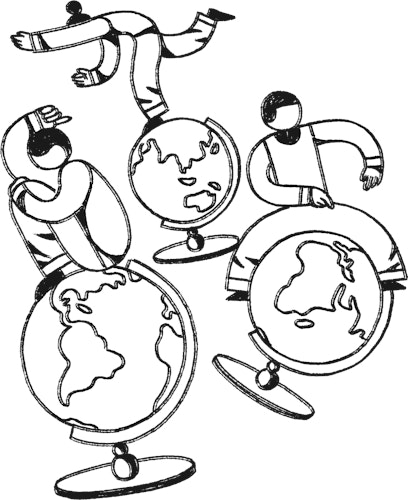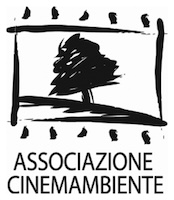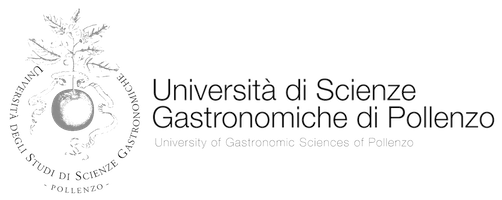O espirito da TV
Directed by
The video records the emotions and reactions of the Waiãpi Indians, when they see their own image and that of other native groups on television for the first time. The Indians reflect on the power of images as an instrument of dialogue with other groups and with non-Indians.
tag
In-depth analysis
About the Movie O espirito da TV
Images from the Amazon [CinemAmbiente 2023] by Silvia Zaccaria
The Amazon, destruction and hope seen through the eyes of its oldest inhabitants: the native Indians. Thanks to the revolutionary project devised by Brazilian documentary maker Vincent Carelli, Video nas aldeias ("Video in the Villages"), the television and the video camera enter the Amazonian villages: the former to let the Indians know the way they are portrayed by the white man and to make them communicate with their native relatives from one side of the country to the other; the latter to enable the Indians to "domesticate" the white man through the image and offer him an updated and realistic vision of them, coming from their inside.
The tribal chiefs were the first to understand the power of the magic box and of the "shade-catching eye”. After having overcome the fear of losing their souls, they are now evenly matched in the fight. The oldest native leaders urge their grandchildren and future generations to be initiated into the use of the video. Learning how to shoot a film is now as important as being shamans, warriors, teachers and defenders of their own people.
They also make sorts of "commercials", where they proudly illustrate their culture and show their strength before the camera, aware of the fact that the white man is on the other side watching them.
This is why in the last few years the camera has proved to be an effective and indispensable weapon in the battles the natives are fighting in defence of their land and traditions.
It allowed them to record and denounce the cultural environment, time after time: roading the disasters which upset their natural and diggers, lumberjacks, small landless settlers construction, dikes, the invasions of gold and multinational companies.
But, at the same time, it brought the culture of the Zo'é to the Waiapi, who have rediscovered their roots, confronting themselves with a people akin but hardly affected by the white man's influence; it showed the Xavantes the Maculi's battles and the images of the Waimiri-Atroari, who are almost extinct; and it conveyed the Xingù native Park children's message to the world.
It allowed young native directors to explore their people's traditional culture; to revive and explain in modern terms rites and ceremonies which risked disappearing or being only the memory of a mythical past; to rediscover the role of the elders, in villages attacked by modernity and as custodians of unique knowledge, although suffering from problems common to all cultures such as solitude, indifference, longing for a past that doesn't exist any more.
Through the video, the Indians reflect on themselves, their society and customs. They reflect on their image and that of other populations. Finally, they reflect on the image the white man has created of them and on the one they should offer him, to refute age-old prejudice, stereotypes, dreaming and naive visions.
For the white man an Indian is basically the naked feather-dressed savage. What a striking impact to see him wearing a wrist-watch, holding a cellular or a video camera. Someone may object: "Can we still represent him this way?"
We can, and maybe more than in the past, because now he claims it with pride, consciousness and determination. Because he knows the two sides of the coin, he knows that the white man is importing not only evil, that some of his instruments such as writing, the computer and the video represent essential weapons nowadays allowing him to survive and keep his own identity.
The Amazon, however, does not only mean native people.
Who can't remember Chico Mendes, the Rain Forest People Alliance leader assassinated 15 years ago?
Chico Mendes was a seringueiro, a rubber picker, a non-Indian who had understood that defending the forest means first of all defending the rights and the traditions of the people who have been living in the forest since the dawn of time. And that such a defence was possible only with the alliance of groups traditionally hostile to each other, fighting one against the other in a "war of the poor”, wanted and encouraged by the economic interests of local landowners without scruple and multinationals.
In the late '80s his fight against the destruction of the forest and for the defence of the natives had brought Amazonia to the centre of the international public opinion's attention, upset by the uncontrolled spreading of deforestation and by the genocide of the natives. Thanks to him and to the intervention of celebrities, like British singer Sting, it had been possible to reduce the number of fires and stop the development of mega-projects such as Altamira dike, on the Xingù river, which would have had disastrous social-environmental effects.
Chico Mendes' death was the end of a spokesman of the movement for the defence of Amazonia and for the sustainable exploitation of its resources. But others would continue his fight.
It is proved by the fact that present Brazilian Minister of the Environment is Marina Silva, former seringueira, follower and friend of Chico Mendes.
In 1992, the first world convention on environmental issues took place in Rio de Janeiro. A new alliance was formed between native people and the western environmentalist movement. Rio agreements led the Brazilian government to regularize some of the natives' territories, like the Yanomami Indians' land, almost completely destroyed by the invasion of about 50,000 gold diggers.
Finally, Amazonia means also land. A poor land, which can be made fertile only by small farmers' labour and efforts.
They come to Amazonia from the farthest corners of Brazil, hoping to find a piece of farming land which is denied to them in other areas of the country. But even here, they only find pastures and monocultures of soy, rice, and corn.
Even Amazonia doesn't seem to have land for them. This is why the landless get together, take sickles, spades, hoes, and sometimes also guns, and occupy unproductive landed estates owned by Brazilian and foreign "todos poderosos" (the powerful). If the Brazilian government does not pass the land reform, thousands of Brazilian landless families will have to conquer by force what should be given to them by law: a vital space to live on.
Somebody may wonder why in an environmental film festival, rather than showing the biodiversity of the Amazonian forest – carnivorous plants, giant leaves, spiders, insects, poisonous frogs, etc – we have chosen to deal with native people, rubber pickers and landless farmers.
We believe that too often we talk about Man and Nature as if they were two different and separate entities, with opposed and incompatible interests: on one hand Progress and Economy, on the other the Environment.
But we all know that this division between Man and Nature is the result of a cultural operation, carried on by man in a precise moment of his evolutionary process. That is, when in the Middle Ages he decided to consider nature as an enemy to subjugate and then, at the time of the Industrial Revolution, as an inert reality he could exercise his power on using machines.
But native people all over the world and Amazonian Indians have proved the contrary: there isn't a gap between man and nature, what you do out of respect for one is also good for the other, what transforms one changes the other too. Finally, you can't take care of a man if you don't consider and respect the environment.
The cosmovision expressed by the native people of Amazonia through the video makes us turn upside down our man-centred and superficial viewpoint. The idea that the universe is an extension of the known world is replaced by an original and polyphonic view, where the known world repeats the structure of the universe, where every being has the same dignity from the smallest insect to man.








